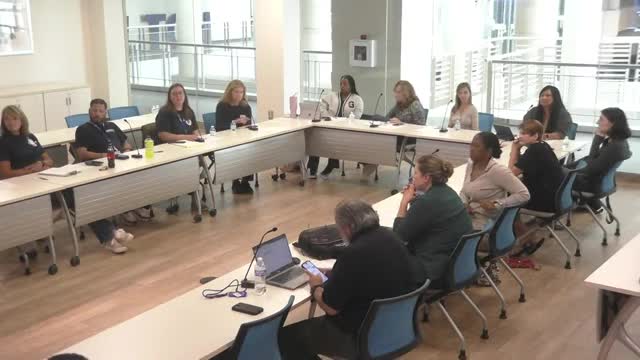Animal rescue group ramps up transport efforts to save pets
July 30, 2024 | Fulton County, Georgia

This article was created by AI summarizing key points discussed. AI makes mistakes, so for full details and context, please refer to the video of the full meeting. Please report any errors so we can fix them. Report an error »

In a recent government meeting, officials discussed ongoing efforts to enhance animal transport programs aimed at relocating dogs and cats from shelters to new homes. The initiative, which has been in place for several years, has seen successful partnerships with organizations like Best Friends Animal Society, which provides vehicles and sometimes assists with the physical transport of animals.
The transport process typically accommodates 25 to 30 pets at a time, depending on their size, allowing for a significant number of animals to leave shelters simultaneously. Staff members often accompany these transports, fostering relationships with receiving partners and gaining insights into their facilities.
The meeting highlighted the importance of logistics in animal transport, including the need for multiple drivers to ensure safe overnight travel. Participants discussed the scheduling of drop-offs and the potential for drivers to enjoy local attractions during their trips.
Additionally, the meeting introduced new partnerships, such as Medical Mutt, which trains dogs to assist individuals with medical needs. This program has successfully graduated six dogs so far, with a 25% graduation rate. Other partnerships include the Department of Agriculture, which has pulled dogs for various roles, including detection work at airports.
The discussion also touched on the challenges of funding for service dogs, with officials noting that while adoption fees are standard, the costs associated with training can be significant. Lifeline, a key partner, has been instrumental in rescuing animals, with 248 cats and 79 dogs relocated this year alone.
To support these efforts, the organization has expanded its staffing structure, including a dedicated transport driver and a rescue coordinator. They emphasized the need for volunteers to assist with transport and fostering, as well as the importance of gathering information about pets to facilitate successful adoptions.
Overall, the meeting underscored the collaborative efforts required to improve animal welfare through effective transport and rescue initiatives, highlighting the critical role of community involvement in these programs.
The transport process typically accommodates 25 to 30 pets at a time, depending on their size, allowing for a significant number of animals to leave shelters simultaneously. Staff members often accompany these transports, fostering relationships with receiving partners and gaining insights into their facilities.
The meeting highlighted the importance of logistics in animal transport, including the need for multiple drivers to ensure safe overnight travel. Participants discussed the scheduling of drop-offs and the potential for drivers to enjoy local attractions during their trips.
Additionally, the meeting introduced new partnerships, such as Medical Mutt, which trains dogs to assist individuals with medical needs. This program has successfully graduated six dogs so far, with a 25% graduation rate. Other partnerships include the Department of Agriculture, which has pulled dogs for various roles, including detection work at airports.
The discussion also touched on the challenges of funding for service dogs, with officials noting that while adoption fees are standard, the costs associated with training can be significant. Lifeline, a key partner, has been instrumental in rescuing animals, with 248 cats and 79 dogs relocated this year alone.
To support these efforts, the organization has expanded its staffing structure, including a dedicated transport driver and a rescue coordinator. They emphasized the need for volunteers to assist with transport and fostering, as well as the importance of gathering information about pets to facilitate successful adoptions.
Overall, the meeting underscored the collaborative efforts required to improve animal welfare through effective transport and rescue initiatives, highlighting the critical role of community involvement in these programs.
View full meeting
This article is based on a recent meeting—watch the full video and explore the complete transcript for deeper insights into the discussion.
View full meeting
